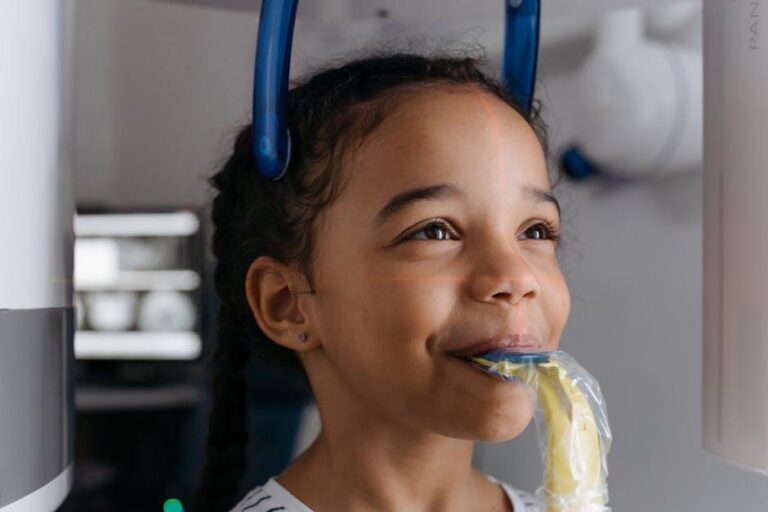1 in 3 Kids Has Dental Problems, Poll Finds – U.S. News & World Report
A recent poll published by U.S. News & World Report has shed light on a worrying trend among American children: one in three kids suffers from dental problems. This disturbing statistic highlights the urgent need for parents, schools, and healthcare providers to prioritize children’s oral health. In this comprehensive article, we explore the causes, effects, and solutions related to childhood dental problems in the United States, offering practical advice for prevention and treatment.
Understanding the Scope: The Poll’s Key Findings
The poll surveyed thousands of parents across the U.S., revealing that:
- 33% of children reported suffering from at least one dental issue in the past year.
- Common problems included cavities, gum disease, tooth sensitivity, and tooth pain.
- Children from lower-income families faced disproportionately higher rates of dental problems.
- Access to dental insurance and routine dental visits correlated strongly with better oral health outcomes.
| Age Group | Percentage with Dental Problems | Common Dental Problems |
|---|---|---|
| 2-5 years | 28% | Early childhood cavities, gum inflammation |
| 6-11 years | 34% | Cavities, tooth sensitivity, minor injuries |
| 12-17 years | 38% | Orthodontic issues, cavities, gum disease |
Why Are So Many Kids Facing Dental Problems?
Multiple factors contribute to the prevalence of dental problems among children. Addressing these causes is crucial to reversing the trend and promoting healthy smiles for the future.
1. Poor Oral Hygiene Habits
Many children do not brush or floss regularly, or may do so ineffectively. Without proper oral hygiene, plaque builds up, leading to cavities, gum disease, and other issues.
2. Excessive Sugar Consumption
High intake of sugary snacks, beverages, and processed foods feeds harmful bacteria in the mouth, accelerating tooth decay.
3. Limited Access to Dental Care
Children without dental insurance or living in underserved areas often miss regular dental check-ups and early treatments.
4. Lack of Parental Awareness
Some parents are unaware of the significance of early dental care or the appropriate timing to start dental visits for their children.
5. Socioeconomic Disparities
Lower-income families often face barriers to quality dental care, nutritious food, and education on oral health maintenance.
Common Dental Problems in Children
Here are the dental issues most frequently reported among children in the poll:
- Cavities (Dental Caries): The most common chronic disease in children, caused by acid-producing bacteria.
- Gingivitis: Early-stage gum disease marked by inflammation, redness, and bleeding gums.
- Tooth Sensitivity: Pain or discomfort caused by exposed dentin or enamel erosion.
- Dental Injuries: Chipped or knocked-out teeth due to accidents or sports injuries.
- Orthodontic Concerns: Misaligned teeth affecting speech, biting, and appearance.
Practical Tips for Preventing Dental Problems in Kids
Parents and caregivers can take several proactive steps to protect children’s oral health:
- Establish Brushing and Flossing Routines: Encourage brushing twice daily with fluoride toothpaste and flossing once a day.
- Limit Sugary Snacks and Drinks: Opt for tooth-friendly snacks like cheese, fruits, and vegetables.
- Schedule Regular Dental Visits: Begin dental checkups by a child’s first birthday and maintain biannual visits.
- Educate on Oral Hygiene: Teach kids the importance of clean teeth and proper brushing techniques.
- Use Mouthguards During Sports: Prevent dental injuries when kids play contact sports.
Real-World Case Study: Improving Childhood Dental Health
Consider the example of a community dental health program in Texas that targeted low-income families. Over three years, the program achieved a 25% reduction in dental problems among enrolled children through:
- Providing free dental screenings and fluoride treatments.
- Organizing oral health workshops for parents and children.
- Partnering with schools to integrate dental hygiene education.
- Offering subsidized dental care and braces for qualifying families.
This case study highlights how coordinated community efforts can significantly improve children’s dental outcomes.
Essential Oral Health Milestones for Kids
| Milestone | Recommended Age |
|---|---|
| First Dental Visit | By 1 year old |
| Start Brushing with Fluoride Toothpaste | As soon as first tooth appears |
| Begin Flossing | Around 2-3 years old |
| Regular Dental Checkups | Every 6 months |
| Orthodontic Evaluation | By age 7 |
How Schools and Communities Can Help
Beyond family efforts, schools and community organizations can play a pivotal role in promoting children’s dental health:
- Implement school-based dental screenings and fluoride varnish programs.
- Provide nutrition education emphasizing the impact of sugar on teeth.
- Make dental health resources and referrals accessible to families.
- Support policies that increase dental care funding for underserved children.
Conclusion: A Call to Action for Better Children’s Dental Health
The alarming statistic from the U.S. News & World Report poll—that 1 in 3 kids is affected by dental problems—is a clear signal that oral health must be a greater priority nationwide. Parents, healthcare providers, educators, and policymakers must collaborate to improve access to dental care, promote preventive habits, and educate families on the lifelong importance of healthy teeth and gums.
With consistent care, better nutrition, and awareness, the future smiles of America’s children can be brighter, healthier, and cavity-free. Start today by scheduling that dental checkup and fostering good oral hygiene routines at home!


